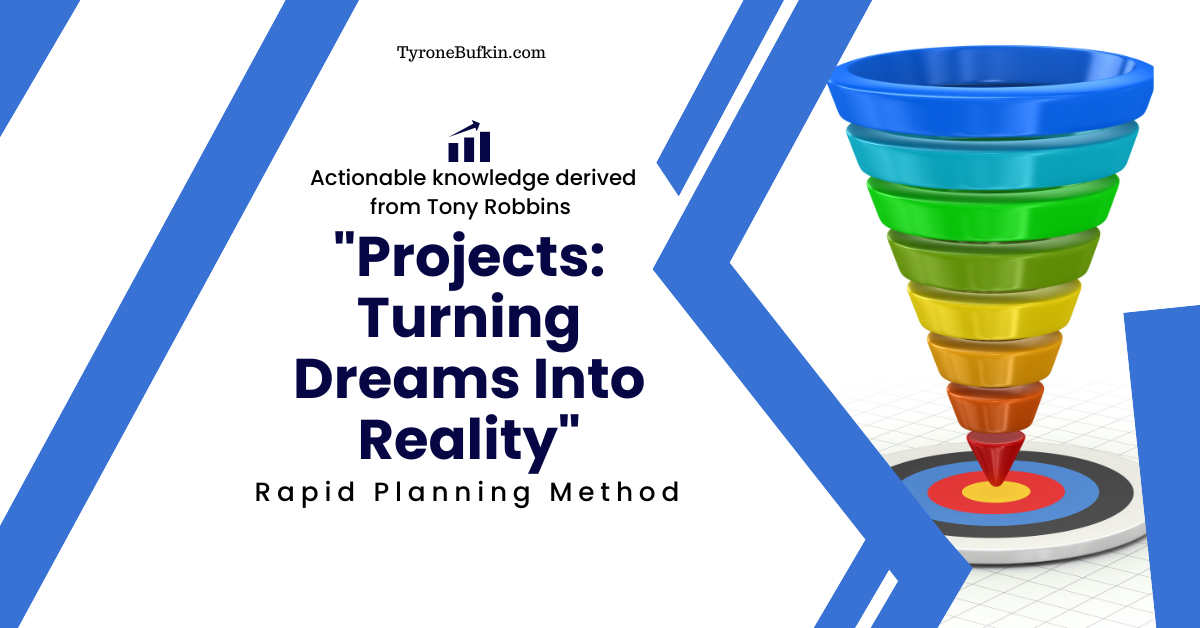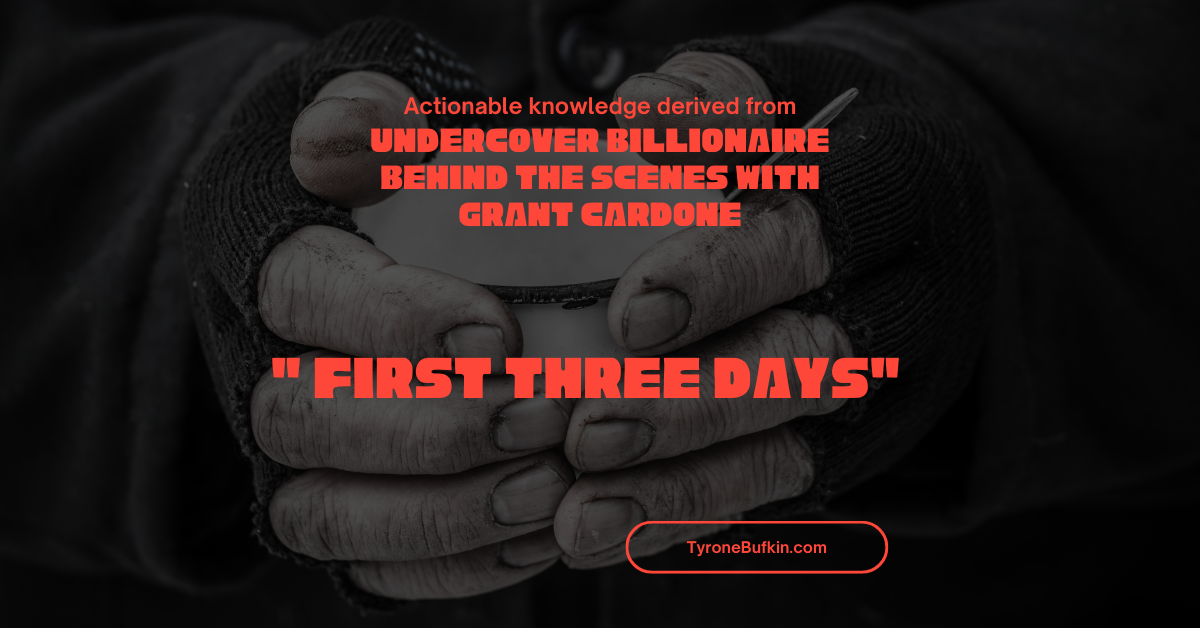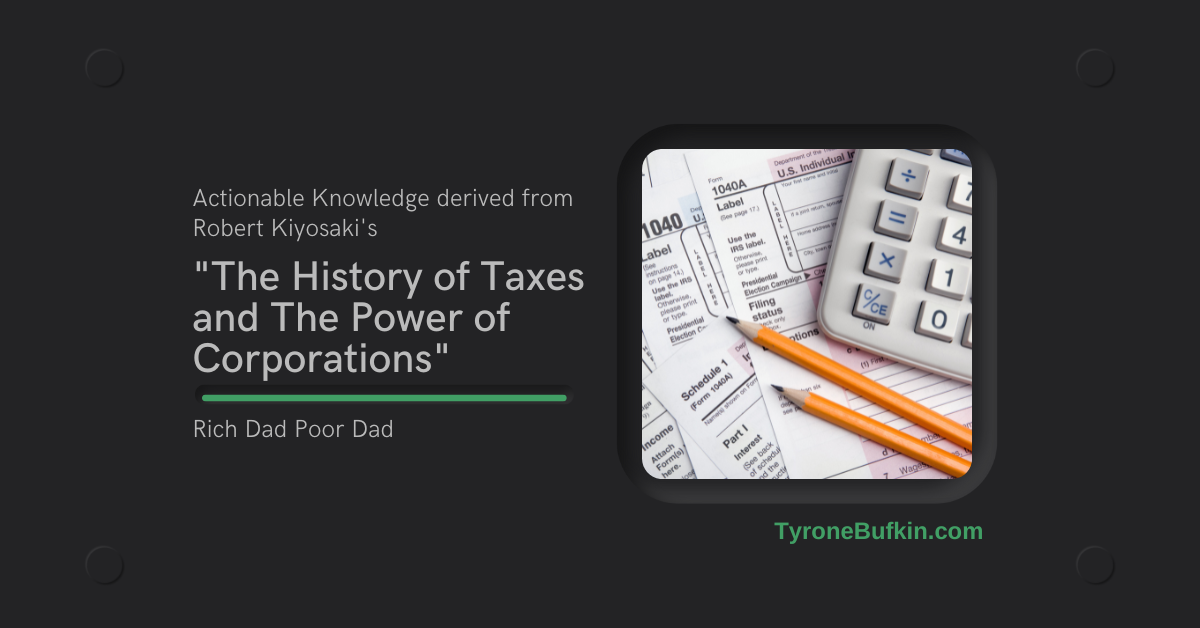THE FIDUCIARY ACTIONABLE KNOWLEDGE IN THIS POST MAY CONTAIN AFFILIATE LINKS. WE GET A COMMISSION, AT NO COST TO YOU, IF YOU DECIDE TO CLICK THROUGH CERTAIN LINKS. WE ONLY RECOMMEND PRODUCTS OR ORGANIZATIONS THAT WE BELIEVE WILL PROVIDE YOU WITH REAL RESULTS. THE INFOMATION IN THIS POST MAY HAVE BE DERIVED FROM THE SOURCES FOUND IN THE 'WORKS CITED' SECTION AT THE BOTTOM OF THE PAGE. PLEASE READ OUR DISCLOSURE PAGE FOR MORE INFO.
 Do you have a big exciting goal but keep putting it off? Have you ever thought, "This dream is so big I don't even know where to start?" Tony Robbins RPM system helps you manage even the most enormous goals. You will learn how to turn thousands of to-list items into a few powerful outcomes. Like the most successful people in the world, you will create projects to manage multiple RPM Blocks until you turn your dreams into reality.
Do you have a big exciting goal but keep putting it off? Have you ever thought, "This dream is so big I don't even know where to start?" Tony Robbins RPM system helps you manage even the most enormous goals. You will learn how to turn thousands of to-list items into a few powerful outcomes. Like the most successful people in the world, you will create projects to manage multiple RPM Blocks until you turn your dreams into reality.
Projects: Turning Dreams Into Reality
Anthony Robbins "Rapid Planning Method" Time of Your Life Program
RPM blocks are three to five action items that, within one week, accomplish a specific short-term goal fueled by a powerful purpose. If you have a more significant outcome, you must master projects. Projects can take a week to a few months to accomplish and require more than one RPM block or critical results. Remember, the goal is to chunk your action items into fewer and more manageable results. Instead of 20 action items on a to-do list, you could have only one project with four RPM blocks.
 So how do you figure out the key results for your project? Once you know what you want to accomplish and why you must achieve it, you can identify others who have succeeded in a similar result you are chasing. Adopting a successful RPM plan into your own is a pathway to power. Everyone is different, and some variables are impossible to recreate, but if you do similar action items, you will have similar results. Modeling your RPM plan after a similar successful strategy will save you time, energy, and frustration.
So how do you figure out the key results for your project? Once you know what you want to accomplish and why you must achieve it, you can identify others who have succeeded in a similar result you are chasing. Adopting a successful RPM plan into your own is a pathway to power. Everyone is different, and some variables are impossible to recreate, but if you do similar action items, you will have similar results. Modeling your RPM plan after a similar successful strategy will save you time, energy, and frustration.
What happens if your project becomes overwhelming? You can keep your RPM plan simple by creating mega-projects. Link similar projects into a mega-project. Identify which tasks to prioritize and which to work on later. Think of your key results as a table of contents in a book. If the projects are chapters, then mega-projects are sections. These distinctions help make a long book easier to read, understand, and manage completion expectations.

The goal is to simplify even the most complex outcomes, first, by narrowing your focus with areas of management such as personal or professional. In each area of control, you must define your categories of improvement. These categories are ongoing areas that will require consistent growth. Instead of millions of action items, you can focus on one project, one RPM block, and one action item at a time.
This system of thinking works because it keeps you focused on your outcome and purpose, which motivates your actions. Instead of trying to force yourself out of bed to get to the gym, you will be thinking about how you will look and feel when you have lost those twenty pounds. Instead of being frustrated while filing taxes, you will focus on what your business will accomplish this year and what it means.
Running a business requires you to control millions of action items, but this system will help you manage them all with a complete focus on your actual outcome. The reason you started the business in the first place. When you are in the weeds and forced to complete actions you don't want to, it's easy to forget why you are doing all of this. The RPM system makes you focus on what you want and why you want it instead of the millions of actions.
Stop dreaming and create the reality you want for yourself. Using projects to manage action items will focus your attention where needed most. The purpose of mastering projects and mega-projects is the simplify your to-do list. Start the process today by getting all your thoughts on paper and out of your head.
Works Cited
Robbins, Anthony. "Projects: Turning Dreams Into Reality" Rapid Planning Method, Robbins Research International, 2017. pp. 123 - 150





